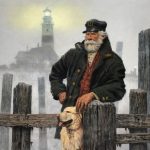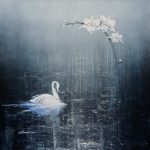What is an Etching and How Are Etchings Made?
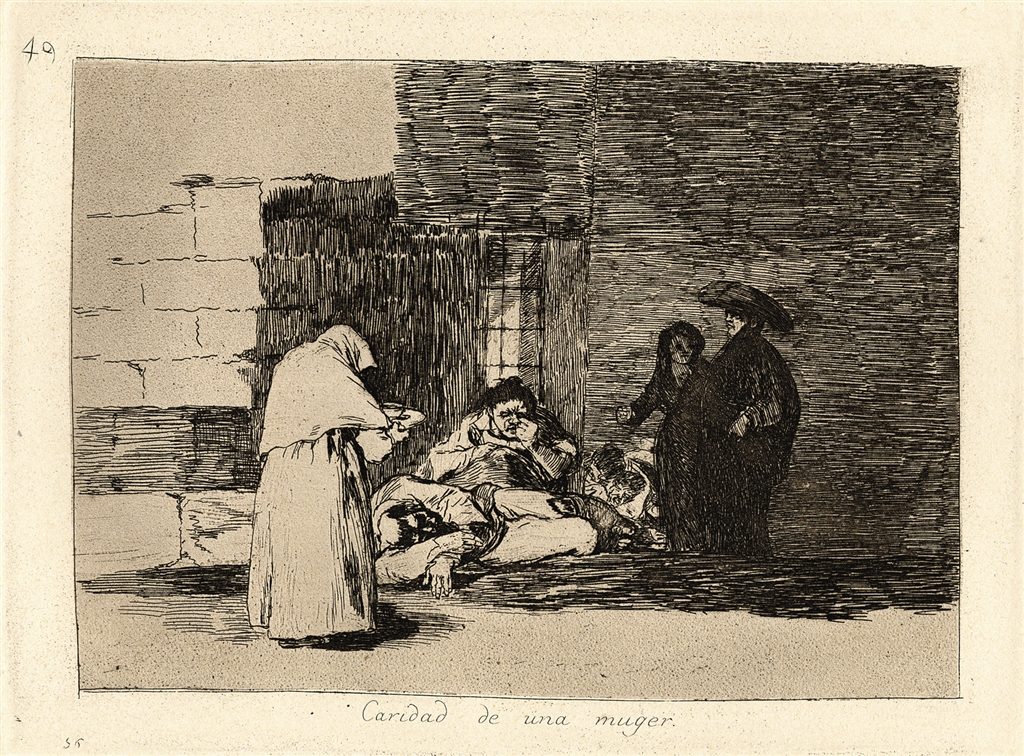
“Caridad de una muger” (A Woman’s Charity, 1810-1820), Francisco Goya. Etching, lavis, burin, and burnisher on wove paper.
Etchings have been hugely influential in art history, particularly in the development of printmaking.
The art of etching is one of the oldest printmaking mediums—originating in the 15th century and evolving out of techniques developed by armorers to decorate their wares.
You can see innovative examples of etching in the works of master artists like Rembrandt van Rijn, Albrecht Dürer, and Francisco Goya. However, even if you’re familiar with the term “etching,” you might not know exactly what the process involves.
With that in mind, we’ve put together this beginner’s introduction to etching, showing how artistic etchings are made. Our etching guide is illustrated by some visual aids we recorded while visiting Amsterdam’s remarkable Rembrandt House Museum a few years ago.
Rembrandt completely revolutionized the art form of etching and, at the museum, you can witness etchings being created in the same way that Rembrandt did over 400 years ago.
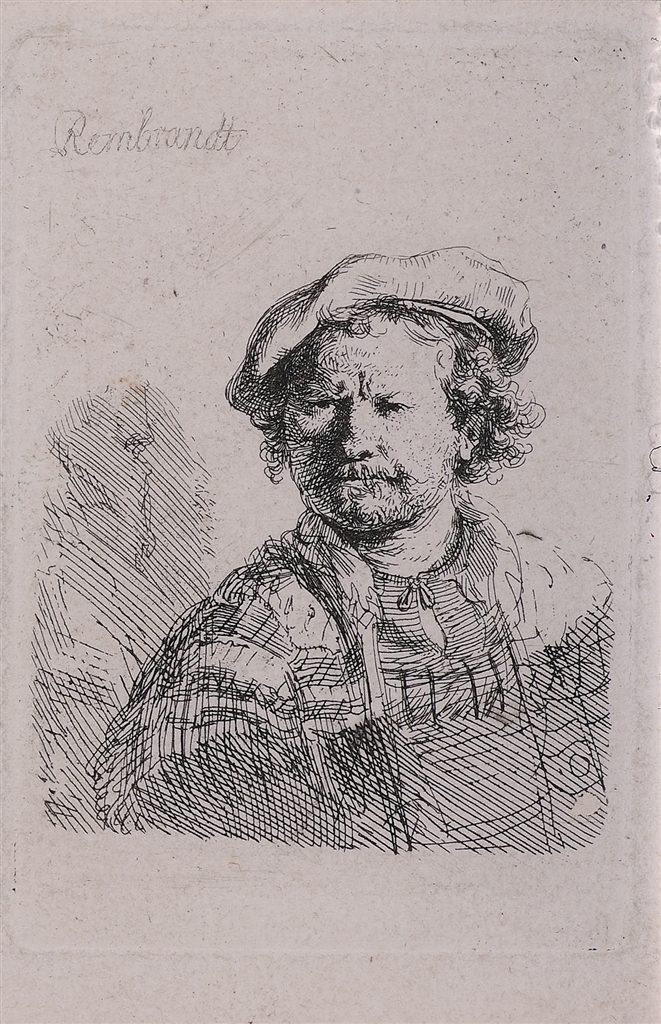
“Self Portrait in a Flat Cap and Embroidered Dress” (c. 1638), Rembrandt van Rijn. Etching on laid paper with small margins.
INTRODUCTION TO ETCHING
During Rembrandt’s time, there were three basic techniques that 17th-century artists commonly used to create prints—copper engraving, drypoint, and etching.
Each involved crafting an image on a metal plate, inking the plate, and running the plate and paper through a printing press.
Copper engraving is the oldest technique and was very popular during the Renaissance. As the name suggests, it involves carving an image directly onto a copper plate. It could be quite difficult and involved a certain degree of metal-working skill.
Drypoint is similar—the artist used a needle called a burin to scratch lines onto a metal plate. The lines were superficial, but you could get a burr—that is, a rough edge—on the lines, which would hold ink. (The burr would quickly wear away.)
Etching, on the other hand, introduced a new innovation that made the medium more appealing to artists, particularly those without a metal-working background.
HOW ETCHINGS ARE MADE
Here are the essentials of the etching process:
1). Like with engraving and drypoint, etching begins with a metal plate, most commonly copper.
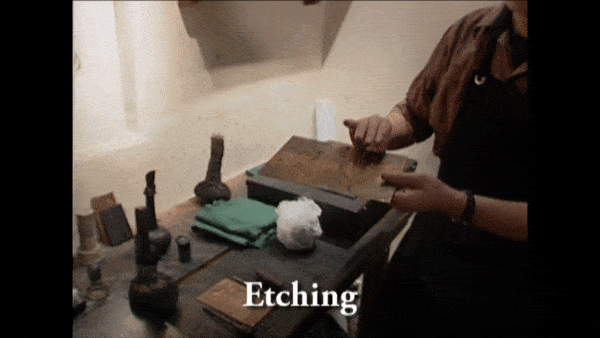
2). Acid-resistant wax, called the ground, is applied to the entire surface of the plate.
3). The artist scratches an image into the ground using a burin (needle), exposing the metal underneath.
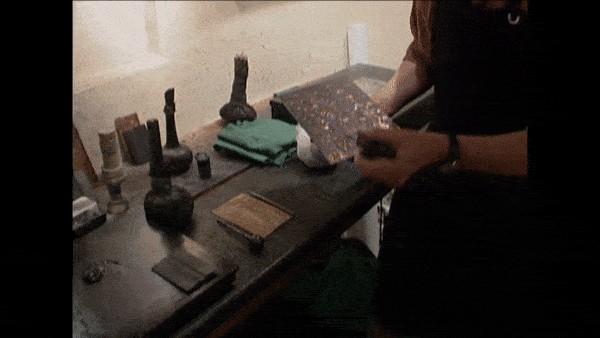
4). Once the image is complete, the plate is submerged in an acid
5). The acid bites away at the exposed metal, creating recessed lines on the plate.
6). The plate is removed and cleaned.
7.) The plate is inked. Ink fills the lines on the plate created by the acid.
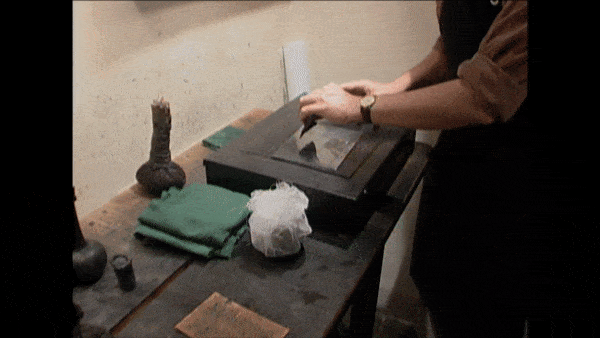
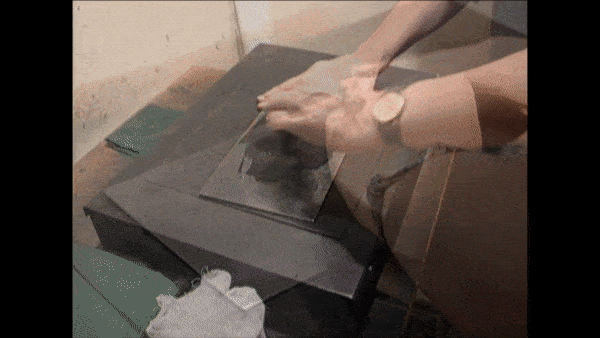
8). The excess ink is removed so ink only remains in the recessed lines.
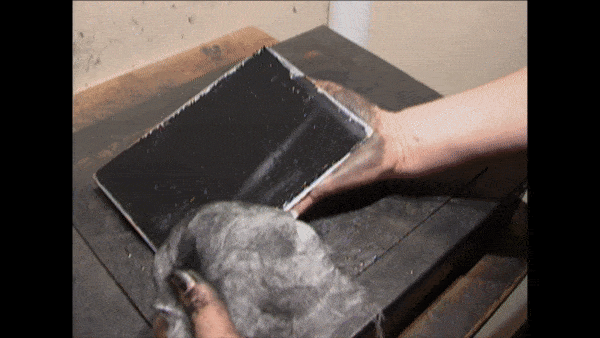
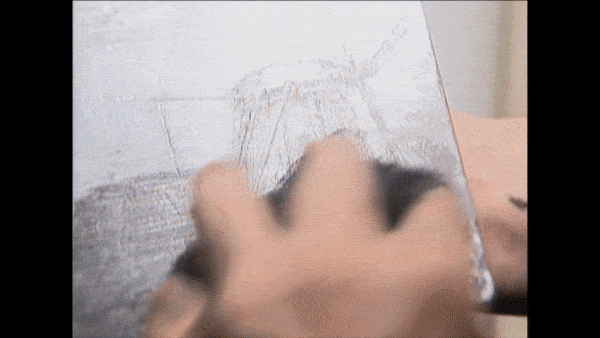
9). Dampened paper is placed over the plate and put through a printing press.
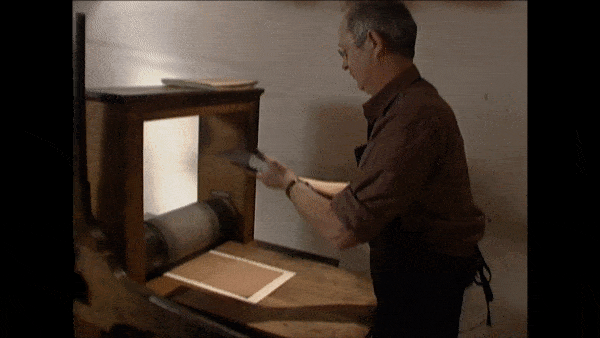
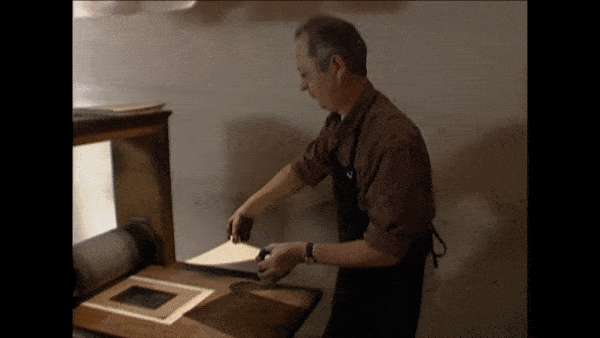
10). The press squeezes the paper and the plate together, impressing an inked image onto the paper.
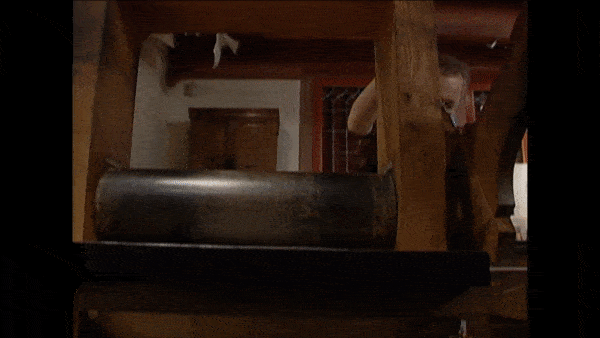
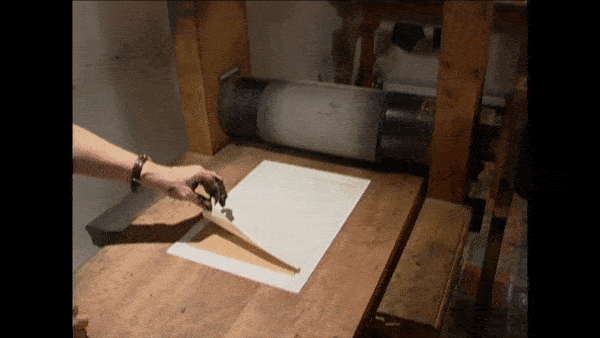
11). Additional impressions can be created by re-inking, cleaning, and putting the plate through the printing press again.
It was a complex and involved process, but it did allow artists to craft and mass-produce prints of staggering clarity and quality.
Take one look at the etchings from Dürer’s “Little Passion,” Rembrandt’s “Millennium Collection,” or Goya’s “Los Caprichos,” and you will marvel at the level of visual and psychological depth that this centuries-old art form could produce.
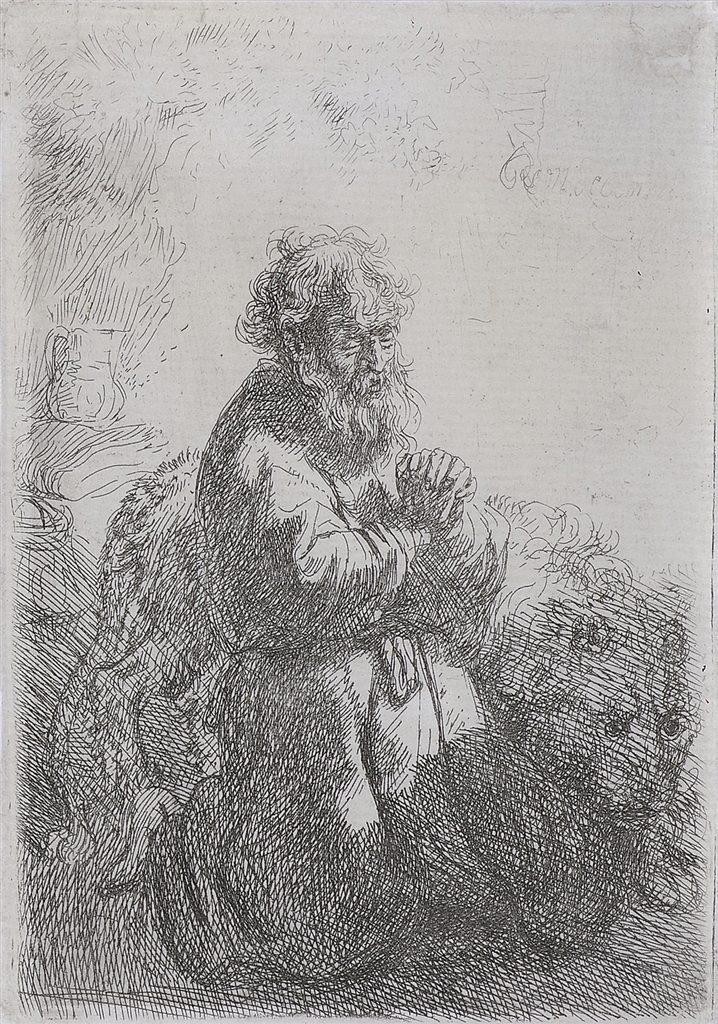
“St. Jerome Kneeling in Prayer, Looking Down” (1635), Rembrandt van Rijn. Etching on thin laid paper with narrow margins.
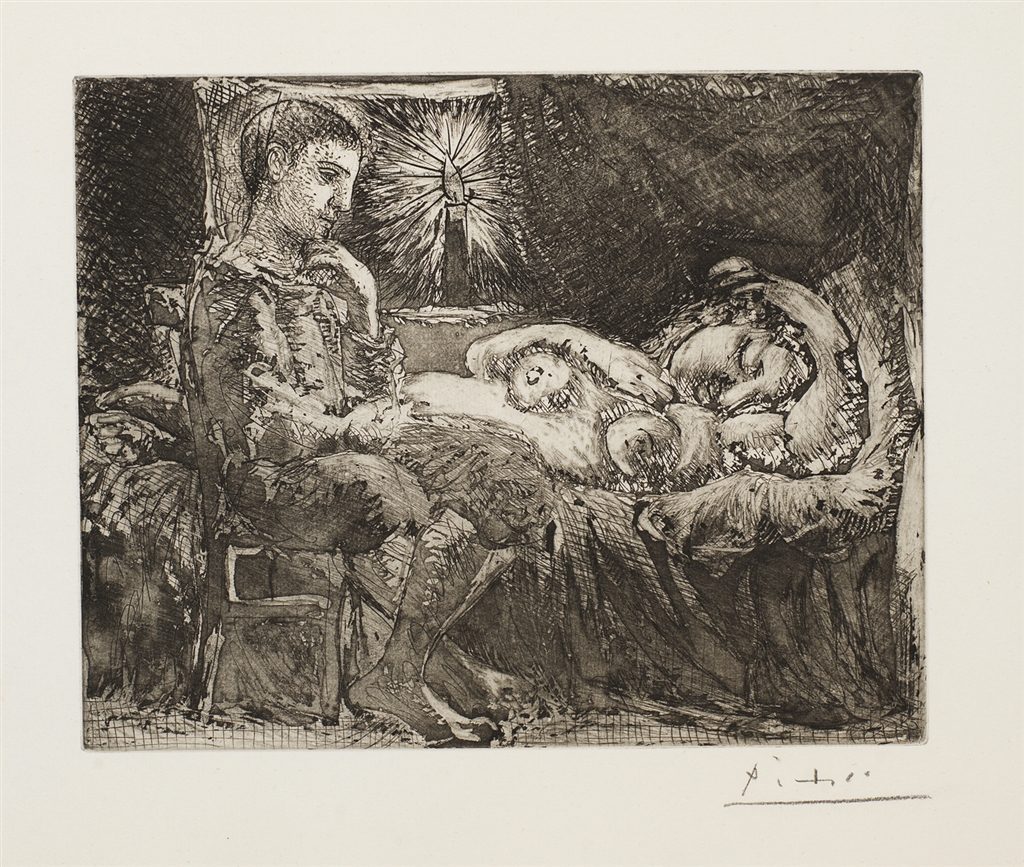
“Garcon et Dormeuse a la Chandelle” (1934), Pablo Picasso. From The Suite Vollard, Etching on Montval laid paper.
If you want to learn more or if you’re interested in adding a master etching to your art collection, contact our gallery consultants at (800) 521-9654 ext. 4 or at sa***@*************ry.com. You can also register for our weekly live online art auction!




